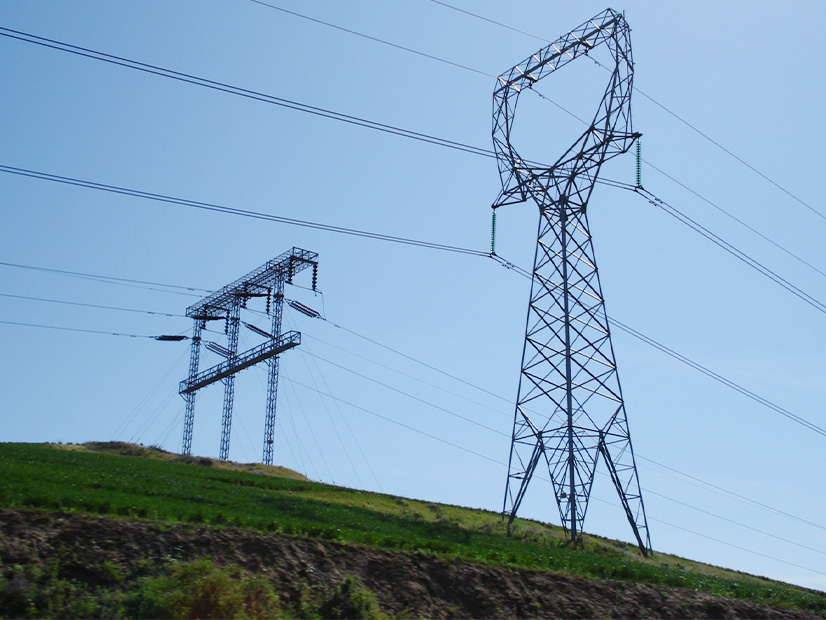The WestTEC steering committee unanimously approved the plan that will underpin a Western transmission study designed to spur development of interregional projects over the next two decades.
The Western Transmission Expansion Coalition’s (WestTEC) steering committee on Sept. 5 unanimously approved the plan that will underpin a Western transmission study designed to stimulate development of interregional projects over the next two decades.
“The study plan approval was the result of many months of collaboration within the WestTEC committees and with community and regional partners,” Sarah Edmonds, CEO of Western Power Pool, which is coordinating WestTEC, said in a press release. “We are grateful to these partners who have helped get us this far and to the Western Electricity Coordinating Council as a major sponsor of our upcoming work.”
WestTEC’s transmission study plan, jointly facilitated by WPP and WECC, is an industry-led effort to address long-term interregional transmission needs as the grid expands and climate change accelerates. Approval of the plan commences the study itself, which will take place over the next two years.
The main objective is to create an “actionable” transmission study by conducting integrated planning analysis across the Western Interconnection that produces 10- and 20-year transmission portfolios. (See Group Looks to Create ‘Actionable’ West-wide Transmission Plan.)
The effort is voluntary, intended to respond to the “widely recognized concern that current transmission planning frameworks in the West do not result in the identification of sufficient transmission solutions to support the needs of the future grid and that interregional transmission planning can be strengthened,” the study plan reads.
The study horizons focus on evaluating transmission requirements in 2035 and 2045, with the goal of prioritizing “flexible and scalable transmission solutions for nearer term needs to help better position the system for efficient long-run expansion.”
Assuming the system will evolve based on current trends, existing policies, generation projections and load forecasts, the study will primarily reference the WECC 2034 anchor dataset, utility integrated resource plans, state agency data and other non-proprietary data sources.
The study isn’t meant to replace existing transmission planning processes or alter FERC Order 1920 — the landmark ruling requiring regions to undergo long-term transmission planning — but to complement them.
Notable features of the transmission study include:
-
- a study footprint spanning the Western Interconnection, as well as interties connecting the Canadian provinces of Alberta and British Columbia.
-
- load-growth forecasts that capture the increasing demand for electricity.
-
- resource forecasts that result in a generation mix that meets state policy requirements, reflects clean energy goals and accounts for voluntary procurement of clean energy.
-
- consideration of multiple planning scenarios to reflect the inherent uncertainties of long-range planning.
-
- an integrated approach to identifying transmission portfolios, with an emphasis on identifying transmission needs not addressed by other planning efforts.
-
- regional partner engagement and governance.
-
- credible and objective study execution through an independent consultant team.
The study’s goals include addressing reliability and commercial and economic efficiency by ensuring the footprint has sufficient transmission capacity to meet future energy needs while reducing congestion, identifying a plan that complies with NERC reliability standards and enabling operational efficiency.
WestTEC also aims to address affordability by unlocking the benefits associated with a coordinated transmission portfolio that can enable greater diversity in supply and demand. Other goals include increasing visibility into the combined capabilities and requirements of the study footprint and addressing cost allocation.
If those goals are met, backers of the plan hope the study will serve as input into local and regional planning processes; initiate bilateral negotiations and development activities; facilitate engagement with local communities, tribal nations and regulators; provide meaningful data; and a serve as a resource to developers, utilities and state regulators.
Study Limits
While WestTEC backers anticipate the effort will “fill many planning gaps currently present in the West,” they also acknowledge its limits.
The study won’t provide a comprehensive list of all needed transmission infrastructure, nor will it capture all the infrastructure needed to maintain economic and reliable operations.
It also won’t focus on identifying infrastructure needed to address pre-existing reliability issues within a single transmission-owner area, or on resolving lower-voltage thermal issues “reasonably expected to be addressed through existing interconnection, local or regional planning processes, even if such issues are present on transmission infrastructure that would otherwise be in the scope of the assessment.”
Additionally, the study offers a “point in time” view of transmission needs, meaning the projects explored by WestTEC will be implemented in response to evolving needs that will be clearer over time.
While WestTEC emphasizes the plan will not be a “singular transmission solution in the West,” participants are confident the study will help ensure reliable and sustainable grid operations in the future.
The 10-year horizon study is already underway and is expected to be complete by September 2025. The 20-year study will begin in spring 2026, with the full report slated for September 2027.
“With this milestone, there’s good momentum right now, and we need to keep our partners engaged and keep it going,” Edmonds said.



